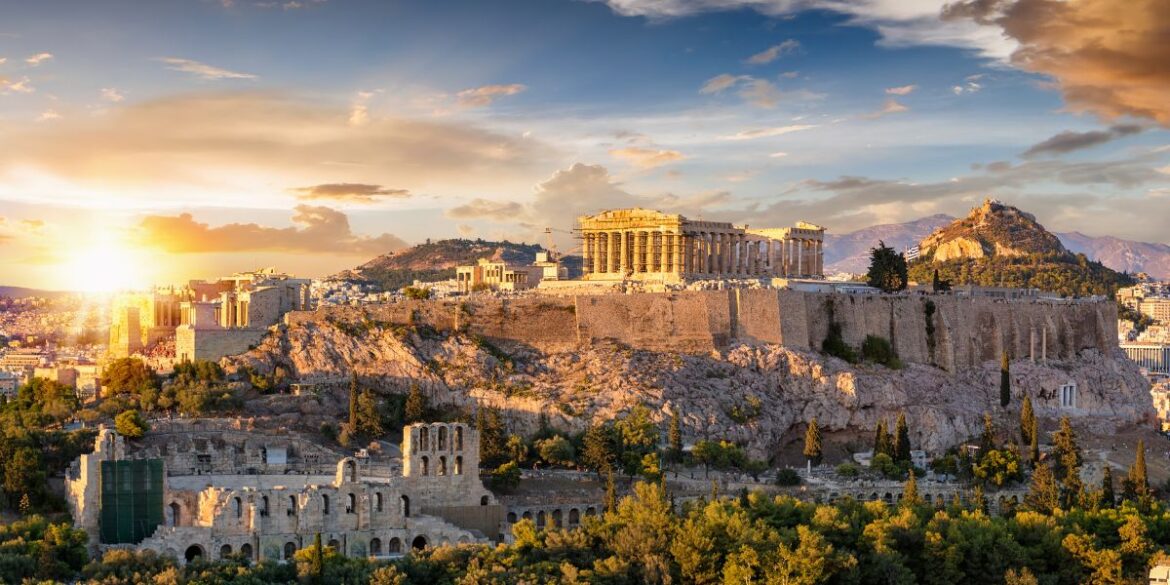Explore Greece’s top historical sites in 2025, from the Acropolis to Delphi, with practical tips on visiting, unique insights, the best times to go, and exclusive tour options.
Greece, with its deep roots in history and civilization, offers a wealth of historical sites that are not only visually stunning but also rich in cultural and educational value. For travelers seeking to explore the essence of ancient history, Greece serves as a magnificent canvas, illustrating the brilliance of human civilization from the Bronze Age through classical antiquity and beyond. This guide aims to highlight ten must-visit historical sites across Greece, offering practical advice to enhance your journey and unveiling unique facts that make each destination a remarkable encounter with the past.
1. The Acropolis of Athens
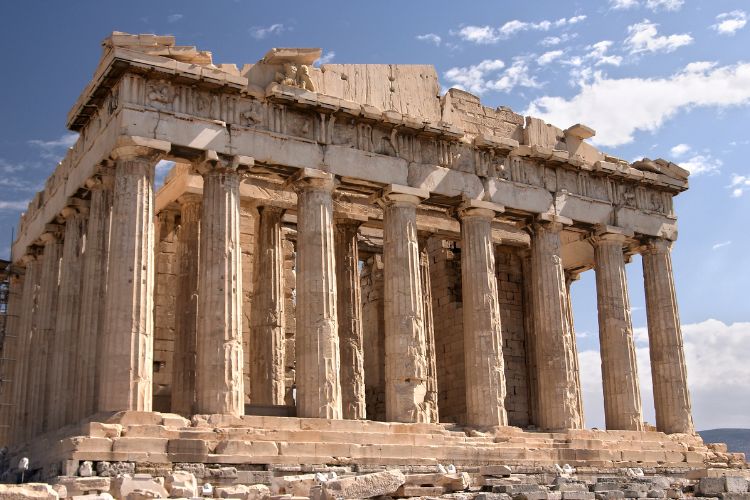
Location and Visiting Tips: Perched above the city of Athens, the Acropolis is easily accessible via the Acropolis metro station. The best times to visit are early morning or late afternoon to avoid the crowds and summer heat. We recommend booking a tour with Athens Walking Tours online, combining the majestic Acropolis with the vibrant streets of Plaka, Anafiotika, and Monastiraki. Enjoy skip-the-line access to iconic Acropolis sites including the Parthenon and Erechtheion with an expert guide, then meander through the quaint alleyways of Plaka and Anafiotika, nestled against the Acropolis hill. The adventure concludes with a delightful food tasting experience in the bustling Monastiraki district, with all entrance fees covered.
Unique Insights: The Acropolis is not just home to the Parthenon; it houses several other significant structures such as the Erechtheion, the Temple of Athena Nike, and the Propylaea. A lesser-known fact is that the olive trees surrounding the site symbolize Athena’s gift to the city, according to mythology, which granted her patronage over Athens.
2. Delphi
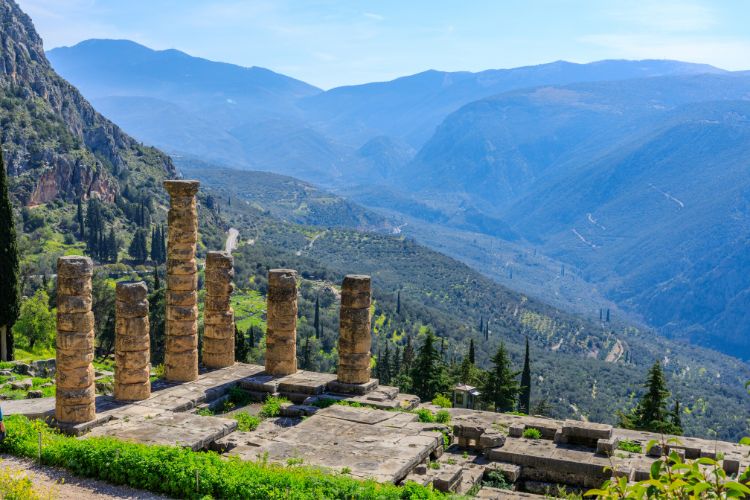
Location and Visiting Tips: Situated on the slopes of Mount Parnassus, Delphi is accessible from Athens by bus or car, approximately a 2.5-hour drive. The site is vast, so wearing comfortable shoes is advisable. Consider visiting during spring or autumn for pleasant weather. Alternatively, you can book an English-speaking guided tour of Delphi with CHAT Tours that includes transportation.
Unique Insights: Delphi was considered the center of the world in ancient Greek religion, marked by the omphalos, or navel stone. Beyond its famous oracle, Delphi was also a site for the Pythian Games, similar in prestige to the Olympic Games, which celebrated athletic, artistic, and musical competitions.
3. Olympia
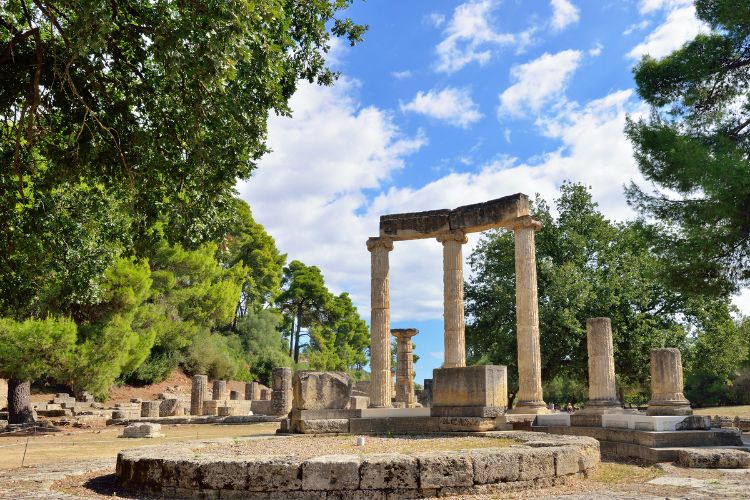
Location and Visiting Tips: Located in the Peloponnese, Olympia is best reached by car or bus from Athens. There are also multi-day guided tours of Olympia that leave from Athens you can book online. The site includes the ancient Olympic stadium and the Archaeological Museum of Olympia. Early morning visits are recommended to explore the area before it gets too warm.
Unique Insights: Olympia is the birthplace of the Olympic Games, first held in 776 BC. The site features the Temple of Hera, where the Olympic flame is still lit every four years for the modern Games. An intriguing fact is the workshop of Phidias, where the colossal statue of Zeus, one of the Seven Wonders of the Ancient World, was crafted.
4. Epidaurus
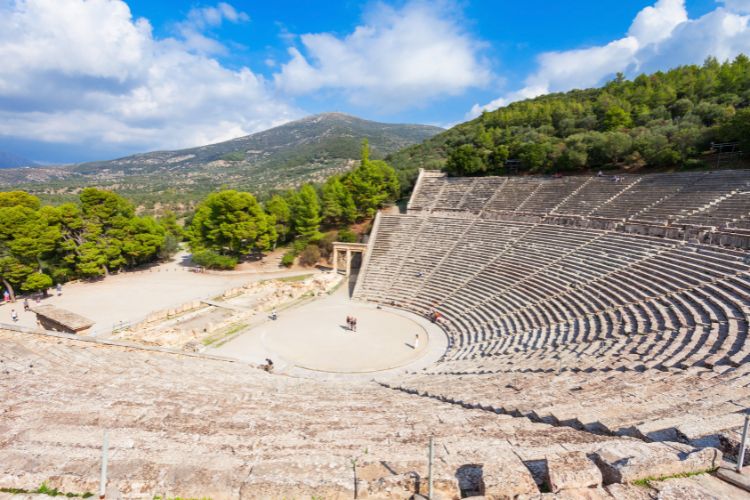
Location and Visiting Tips: Epidaurus is located in the northeastern part of the Peloponnese, near Nafplio. The ancient theatre of Epidaurus is renowned for its exceptional acoustics, where even the sound of a match being struck at the center stage can be heard clearly at the top tier. Small group tours can be easily booked online.
Unique Insights: The site was dedicated to Asclepius, the god of medicine. Pilgrims visited the sanctuary to seek cures for ailments, participating in healing rituals that included theater performances, believed to be therapeutic. The nearby museum displays surgical instruments and votive offerings left by those seeking healing.
5. Mycenae
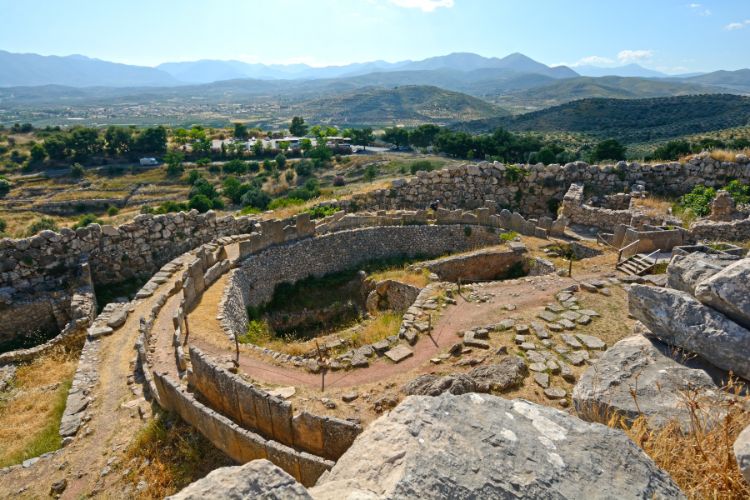
Location and Visiting Tips: Mycenae, one of the major centers of Greek civilization in the second millennium BC, is located in the northeastern part of the Peloponnese. The site includes the famous Lion Gate and the Treasury of Atreus. Visiting early in the day helps avoid the crowds and heat. Numerous tours are available, including bus trips to Mycenae and can be booked online.
Unique Insights: Mycenae is linked to Homer’s epic tales, believed to be the kingdom of Agamemnon. Archaeological discoveries, such as the Mask of Agamemnon, highlight the wealth and sophistication of Mycenaean civilization. The site’s tholos tombs are engineering marvels, showcasing advanced construction techniques of the era.
6. Knossos Palace, Crete
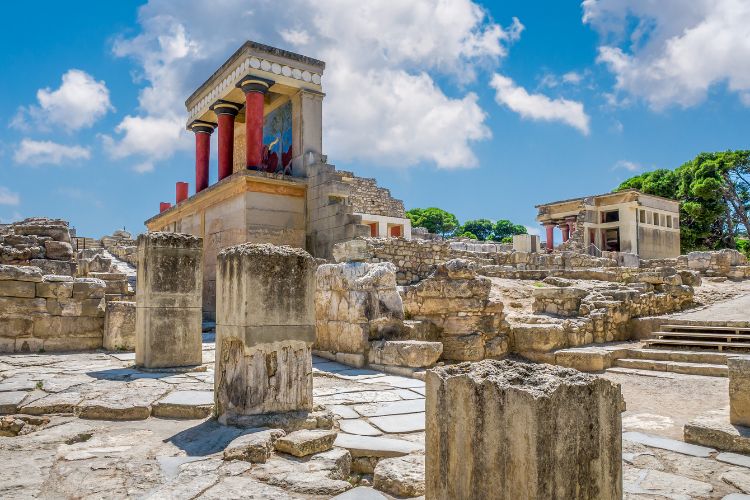
Location and Visiting Tips: The largest Bronze Age archaeological site on Crete, Knossos Palace is located just outside Heraklion. It’s easily accessible by bus or car. The site is vast, so allocate several hours to explore. Visiting in the morning can help avoid the largest tour groups. Purchase skip-the-line tickets to explore the palace right here.
Unique Insights: Knossos is central to Minoan civilization and the myth of the labyrinth and Minotaur. The palace’s complex architecture and advanced features, such as an early form of plumbing, reflect the sophistication of Minoan society. Frescoes and artifacts suggest a culture rich in art and ceremony.
7. The Sanctuary of Asklepios at Epidaurus
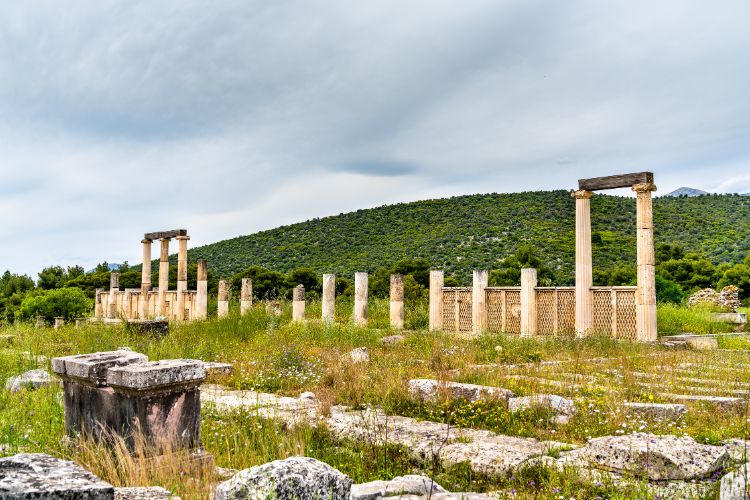
Location and Visiting Tips: This sanctuary, dedicated to the god of medicine, Asklepios, is situated near the ancient theatre of Epidaurus. It is best visited from Nafplio or as part of a day trip from Athens. The site’s peaceful surroundings offer a contemplative visit.
Unique Insights: The sanctuary was an ancient healing center, famed for its dream cures. Patients would sleep in the abaton, or dormitory, hoping to receive a dream visitation by the god, which priests would interpret as prescriptions for healing. The site’s archaeological museum exhibits surgical instruments and medical votives, showcasing the early history of medicine.
8. The Medieval City of Rhodes
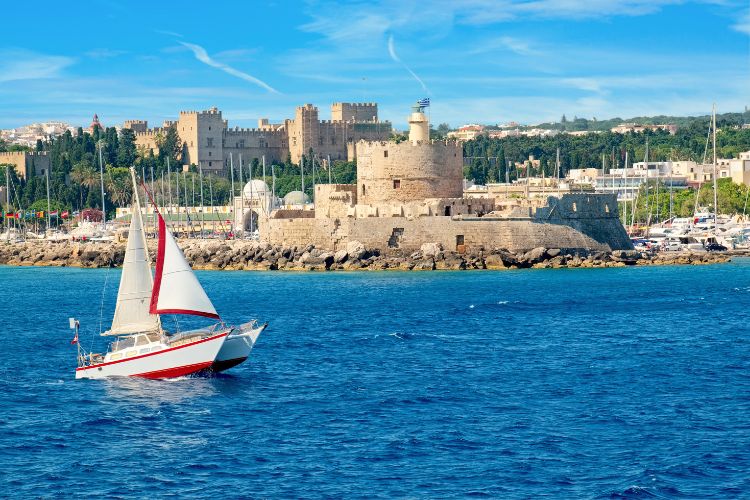
Location and Visiting Tips: The island of Rhodes is accessible by plane or ferry. The medieval city, a UNESCO World Heritage Site, is one of the best-preserved medieval towns in Europe. Exploring early in the morning or late in the afternoon offers a more relaxed experience. Alternatively, consider viewing and experiencing the city by sea, with all-inclusive Greek BBQ and unlimited drinks on a sailing excursion.
Unique Insights: The city’s architecture is a tapestry of historical periods, with influences from the Knights Hospitaller, the Ottomans, and the Italians. The Street of the Knights and the Palace of the Grand Master are highlights. A fascinating aspect is the city’s role as a crucial link in the trade routes between Europe and the East during the medieval period.
9. The Meteora Monasteries
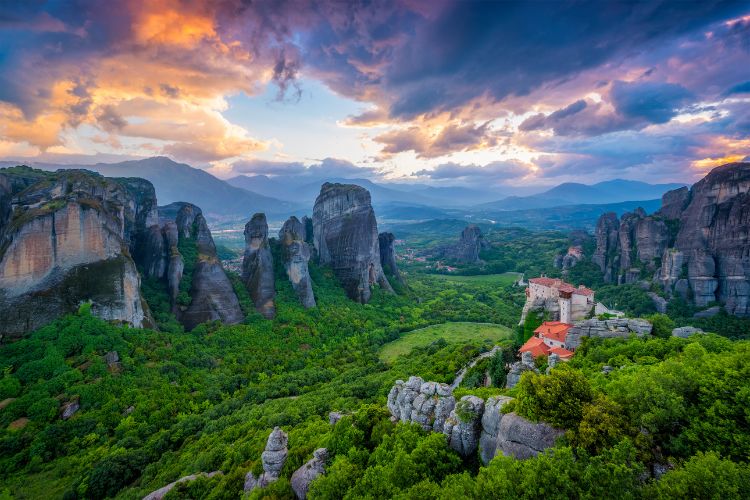
Location and Visiting Tips: Located near the town of Kalambaka in central Greece, the Meteora Monasteries are perched atop towering rock formations. Visiting requires climbing steps, so comfortable footwear is recommended. Early morning visits offer softer light for photography and fewer visitors. Consider taking a guided full-day hiking tour of the area that includes a transfer and monastery visit.
Unique Insights: Meteora, meaning “suspended in air,” comprises six monasteries that are accessible to the public. The monasteries were established by hermit monks in the 14th century as a refuge from Turkish invaders. The unique positioning and construction of these monasteries on almost inaccessible rock pillars are a testament to the monks’ dedication to spiritual solitude and meditation.
10. The Ancient City of Philippi
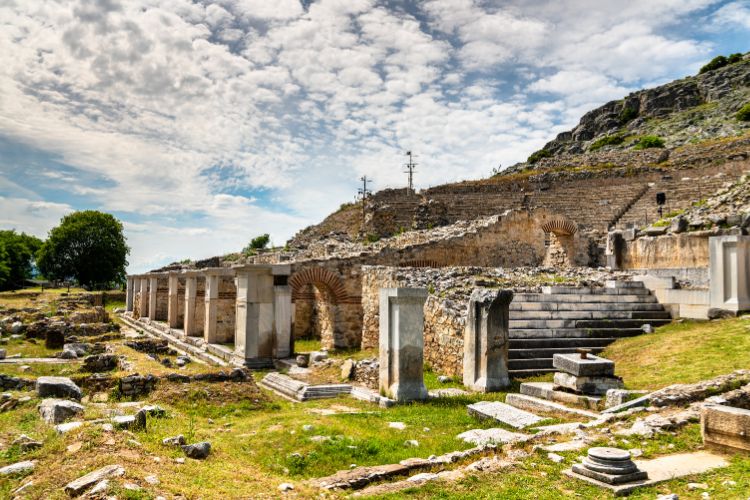
Location and Visiting Tips: Located in the region of Eastern Macedonia and Thrace, Philippi is accessible by road from Kavala. The site includes ruins of the ancient city, a theater, and early Christian structures. Morning visits are advisable to enjoy the site in cooler temperatures.
Unique Insights: Philippi, founded in 356 BC by Philip II of Macedon, played a significant role in Hellenistic, Roman, and early Christian history. It is renowned for the Battle of Philippi in 42 BC, which marked the beginning of the end for the Roman Republic. The site is also significant for Christians, as it is where Apostle Paul established one of the first European Christian communities.
Practical Travel Tips for Visiting Greece
For travelers journeying from the United States, airfare can vary significantly depending on the time of year, with the peak tourist season between June and August often commanding higher prices. Consider traveling during the shoulder seasons of April to early June or September to October, when flights can be more affordable, and the weather remains pleasant. European travelers enjoy a wider array of budget airline options, making Greece an easily accessible destination with frequent flights to major cities and islands.
Upon arrival, visitors have multiple options for navigating the country’s diverse landscapes and historical sites. Private transfers and tours offer a personalized and stress-free way to explore, with the benefit of local knowledge guiding you to hidden gems and historical insights. For those who cherish independence, renting a car provides the flexibility to discover Greece’s scenic routes at your own pace. It’s advisable to book vehicles in advance, especially if planning to visit during the summer months. Ensure you’re comfortable with manual transmission, as automatic cars are less common and more expensive. Moreover, familiarize yourself with local driving laws and parking regulations to avoid any inconveniences.
Timing your visit is crucial to maximizing your experience in Greece. The best times to visit are during the spring and fall when the weather is mild, tourist crowds are thinner, and accommodation prices are more reasonable. These seasons also offer the perfect conditions for outdoor activities such as hiking, exploring ancient ruins, and enjoying the stunning beaches without the intense heat of the summer. Additionally, many festivals and cultural events occur in the spring and fall, providing a deeper insight into Greek traditions and community life.
